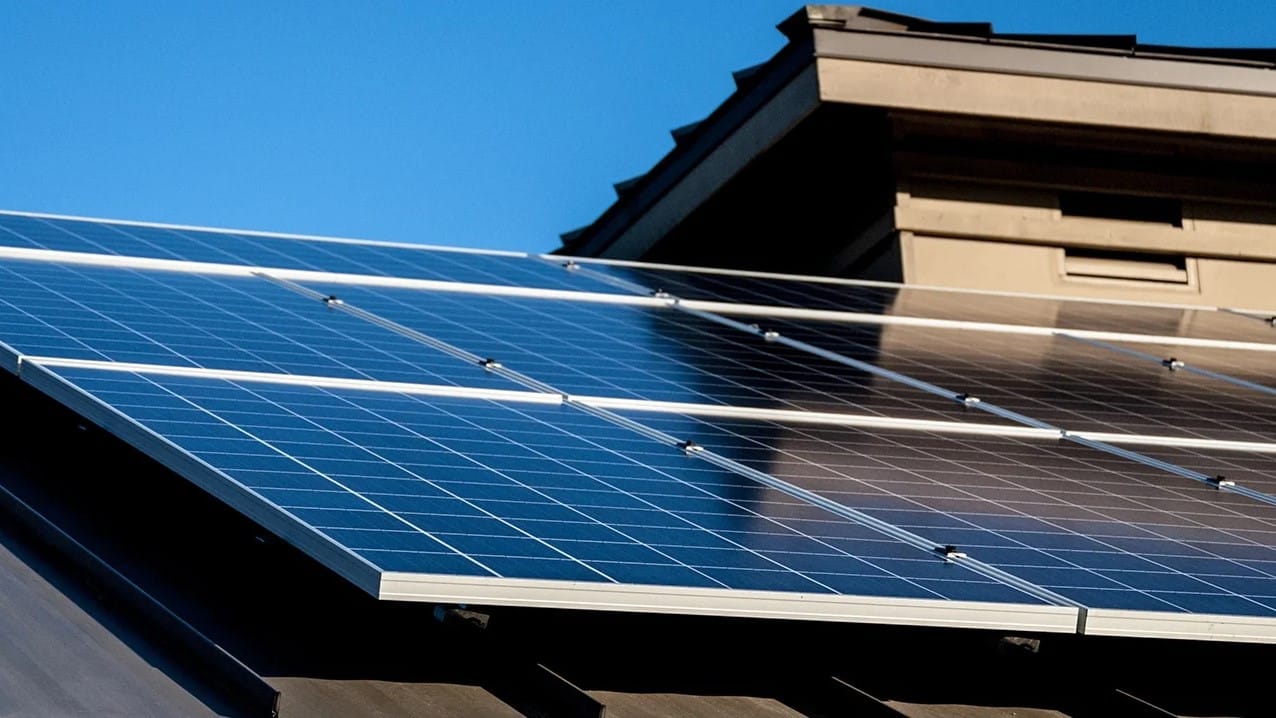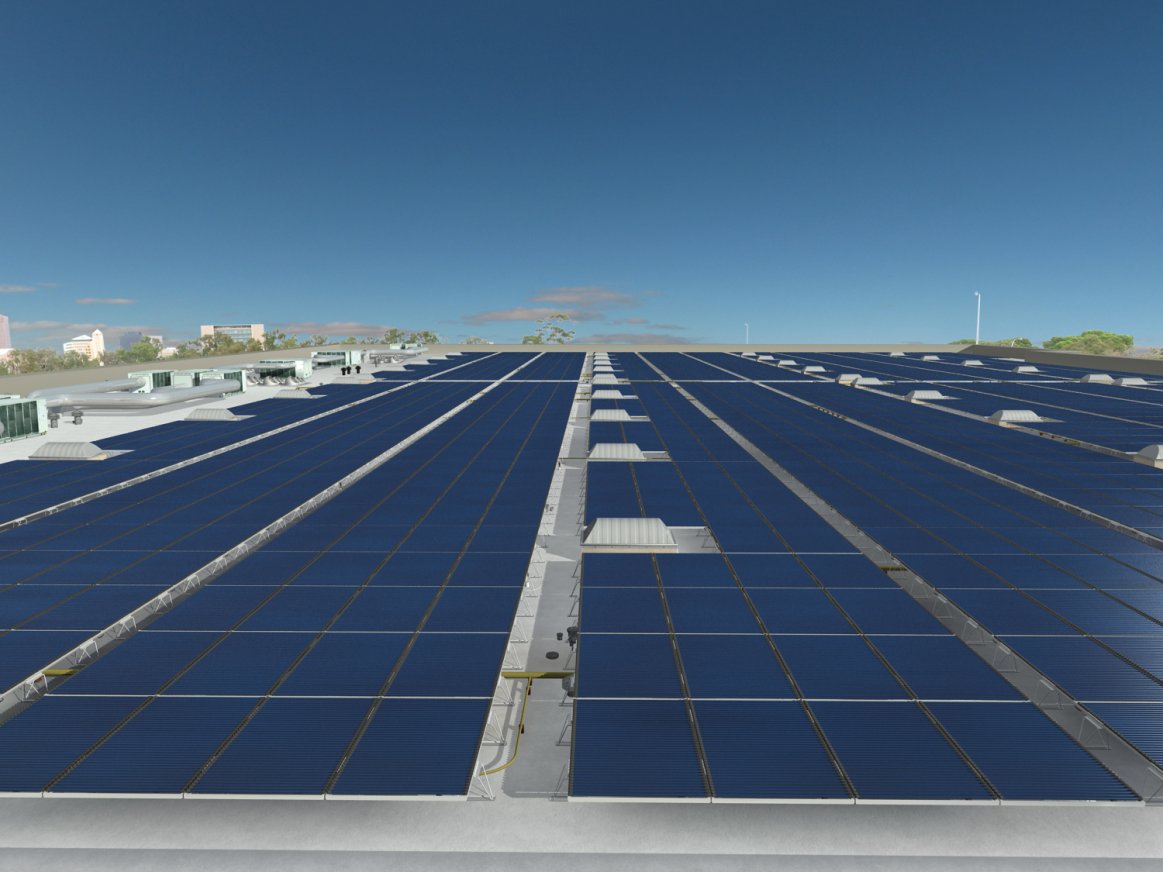Thin-Film vs Monocrystalline Solar Panels: 6 Comparisons
Thin-film panels offer 10-13% efficiency and flexible installation at 0.50−0.70/W, while monocrystalline delivers 18-22% efficiency in rigid frames for 0.90−1.20/W, with thin-film degrading 1% annually versus mono’s 0.5% in 25-year lifespans.
Cost and Budget Differences
When choosing between thin-film and monocrystalline solar panels, cost is often the deciding factor. Thin-film panels are cheaper upfront, averaging 0.50to1.00 per watt, while monocrystalline panels cost 1.00to1.50 per watt. However, price alone doesn’t tell the full story. Thin-film requires more space (10-20% additional area) to generate the same power, increasing installation costs if roof space is limited. Monocrystalline, despite the higher initial cost, lasts longer (25-30 years vs. 15-20 years for thin-film) and loses efficiency slower (0.3-0.5% per year vs. 0.5-1.0%), making it cheaper in the long run.
Installation costs also differ. Thin-film is lighter (50-70% less weight per panel), reducing structural reinforcement needs, but its lower efficiency (10-13% vs. 18-22% for monocrystalline) means you need more panels—raising labor and racking expenses. Monocrystalline, though heavier, fits more power into less space, lowering per-watt installation fees.
Maintenance costs favor monocrystalline. Thin-film degrades faster in high heat (above 77°F/25°C), losing 5-10% more output than monocrystalline in hot climates. Monocrystalline also handles snow loads (up to 5400 Pa vs. 2400 Pa for thin-film) better, reducing winter downtime.
Factor | Thin-Film | Monocrystalline |
Panel Cost | 2,500−5,000 | 5,000−7,500 |
Installation | 1.50−2.00/W | 1.00−1.50/W |
Lifespan | 15-20 years | 25-30 years |
Efficiency Loss/Year | 0.5-1.0% | 0.3-0.5% |
Space Needed | 400-500 sq. ft. | 300-350 sq. ft. |
Rebates and incentives (like the 26% U.S. federal tax credit) apply to both, but monocrystalline’s higher efficiency often qualifies for better local incentives. Over 20 years, a monocrystalline system saves 1,000−3,000 in replacement and lost energy costs.

Efficiency in Real Use
Solar panel efficiency isn’t just about lab numbers—real-world conditions like heat, shading, and angle drastically change performance. Monocrystalline panels typically hit 18-22% efficiency in ideal conditions, while thin-film averages 10-13%. But in practice, monocrystalline loses 0.3-0.5% efficiency per year, whereas thin-film degrades 0.5-1.0% annually, meaning a 10-year-old thin-film system could be 5-10% less efficient than a monocrystalline one of the same age.
Heat is a major factor: Thin-film panels lose 5-10% more power at temperatures above 77°F (25°C) compared to monocrystalline. In desert climates where temps regularly hit 95°F (35°C), thin-film’s output can drop 15-20%, while monocrystalline stays within 10-12% loss.
Shading impacts thin-film more severely. If just 10% of a thin-film panel is shaded, power output can plunge 30-50%, whereas monocrystalline’s bypass diodes limit losses to 10-20%. This makes monocrystalline better for partially shaded roofs or areas with tree cover.
Low-light performance is where thin-film sometimes shines. On cloudy days, thin-film generates 5-8% more power than monocrystalline due to its broader light absorption. But this advantage shrinks in winter, when shorter days and snow cover reduce thin-film’s already lower peak output.
Installation angle matters too. Thin-film performs better on flat or low-slope roofs (5-15° pitch), while monocrystalline thrives at 30-40° angles, common in residential setups. If your roof is steep, monocrystalline’s higher direct-light efficiency wins.
Dust and dirt hurt both types, but thin-film’s lower efficiency means faster buildup impacts. A 5% dust layer on thin-film cuts output 8-12%, while monocrystalline loses 5-8%. Without regular cleaning, thin-film’s annual energy yield can drop 3-5% more than monocrystalline’s.
Size and Space Needed
When comparing thin-film and monocrystalline solar panels, space efficiency is a critical factor. Monocrystalline panels pack more power into less area, typically requiring 25-40% less space than thin-film for the same energy output. A standard 400W monocrystalline panel measures around 21.5 sq. ft. (2 m²), while thin-film panels of the same wattage need 30-35 sq. ft. (2.8-3.3 m²) due to their lower efficiency (10-13% vs. 18-22%).
For a 5kW residential system, monocrystalline panels take up 300-350 sq. ft. (28-33 m²), while thin-film requires 400-500 sq. ft. (37-46 m²). If roof space is limited, monocrystalline is the clear winner. Thin-film works better for large, open areas like commercial rooftops or ground-mounted arrays where extra space isn’t an issue.
Weight is another consideration. Monocrystalline panels weigh 40-50 lbs (18-23 kg) each, while thin-film is much lighter at 15-25 lbs (7-11 kg). This makes thin-film easier to install on weaker roofs or structures with weight limits, but the space trade-off often negates this advantage for homes.
Factor | Thin-Film | Monocrystalline |
Total Area Needed | 400-500 sq. ft. | 300-350 sq. ft. |
Panels Required | 20-25 panels | 12-15 panels |
Weight per Panel | 15-25 lbs | 40-50 lbs |
Roof Compatibility | Better for weak roofs | Needs stronger support |
Installation complexity also changes with size. Thin-film’s larger surface area means more mounting hardware and wiring, increasing labor time by 10-20%. Monocrystalline’s compact design simplifies installation, reducing labor costs by 0.10−0.20 per watt.
Durability Over Time
Solar panels are a long-term investment, and how they hold up over decades directly impacts your energy savings. Monocrystalline panels typically last 25-30 years, while thin-film averages 15-20 years before significant degradation. But lifespan alone doesn't tell the full story—environmental factors, material quality, and maintenance all play crucial roles in real-world durability.
Here are the key differences in how these panels age:
l Degradation rates: Monocrystalline loses 0.3-0.5% efficiency per year, while thin-film degrades 0.5-1.0% annually. After 10 years, a monocrystalline panel still operates at 92-95% of its original output, whereas thin-film drops to 85-90%.
l Weather resistance: Monocrystalline handles hail (up to 1" diameter at 50 mph), heavy snow loads (5400 Pa), and high winds (140 mph) better than thin-film, which withstands smaller hail (0.5") and lower pressure (2400 Pa).
l Temperature tolerance: Both perform worse in heat, but thin-film's output drops 5-10% more than monocrystalline at temperatures above 95°F (35°C).
l Corrosion risk: Thin-film's flexible backing is more prone to moisture damage in humid climates, with 3-5% higher failure rates in coastal areas compared to monocrystalline's rigid glass casing.
Physical durability tests show monocrystalline panels maintain 85-90% structural integrity after 25 years, while thin-film shows 15-20% more microcracks and delamination in the same period. These small defects compound over time, reducing thin-film's effective lifespan.
Warranty coverage reflects this gap—most monocrystalline panels come with 25-year performance guarantees, while thin-film warranties typically cap at 10-15 years. Manufacturers know which technology holds up better.
Maintenance needs also differ. Thin-film requires more frequent inspections (every 2-3 years vs. 3-5 for monocrystalline) to check for peeling layers and moisture damage. Monocrystalline's rigid structure needs less intervention, just occasional cleaning to maintain peak efficiency.
Performance in Heat
Solar panels ironically lose efficiency when they get too hot—and not all panels handle heat equally. Monocrystalline panels typically operate at 44-46°C (111-115°F) in full sun, while thin-film runs 5-8°C hotter (50-54°C/122-129°F) due to poorer heat dissipation. This temperature difference directly impacts power output, especially in desert climates where rooftop temps regularly exceed 60°C (140°F).
Here's how heat affects performance:
l Power loss per degree: For every 1°C (1.8°F) above 25°C (77°F), monocrystalline loses 0.35-0.40% efficiency, while thin-film drops 0.45-0.50%. At 50°C (122°F), that means 8-10% power loss for monocrystalline vs. 11-13% for thin-film.
l Peak summer output: In Arizona (avg. 45°C/113°F rooftop temps), thin-film systems produce 15-18% less power in July vs. April, while monocrystalline loses 10-12%.
l Nighttime recovery: Thin-film's flexible materials retain heat 20-30 minutes longer after sunset, delaying full efficiency restoration compared to monocrystalline's faster-cooling glass.
Material science explains the gap: Monocrystalline's silicon wafer construction dissipates heat better than thin-film's layered polymer backing. Lab tests show thin-film's core temperature rises 15-20% faster under identical sunlight, accelerating long-term degradation in hot climates.
Real-world data from Nevada solar farms shows thin-film arrays underperform monocrystalline by 12-15% annually when ambient temps exceed 35°C (95°F). The gap widens to 18-22% in heatwaves above 42°C (107°F)—enough to impact ROI calculations.
Installation and Setup
Installing solar panels isn’t just about slapping them on a roof—panel type dramatically impacts labor time, complexity, and cost. Monocrystalline systems typically take 1-2 days for a 5kW residential install, while thin-film requires 1.5-3 days due to larger area coverage and specialized mounting. Labor costs reflect this: 0.80−1.20 per watt for monocrystalline vs. 1.00−1.50 per watt for thin-film.
Here’s what actually happens during installation:
l Roof prep: Monocrystalline’s rigid frames need fewer attachment points (12-15 per 5kW system) vs. thin-film’s 20-25 mounting spots for the same output.
l Weight handling: Thin-film’s 15-25 lb panels are easier to lift, but you need 30-40% more of them, increasing total man-hours by 2-4 hours per job.
l Wiring complexity: Thin-film’s lower voltage requires 10-15% more wiring runs, adding 200−400 in extra conduit and connectors.
Structural considerations matter too. Thin-film’s lightweight (2-3 lbs/sq ft) works on older roofs with 20-25 lb/sq ft load limits, while monocrystalline’s 4-5 lbs/sq ft often needs reinforcement (500−1,500 extra) for aged structures.
Permitting headaches differ by tech:
l Monocrystalline’s standardized sizes get 48-hour permit approvals in most counties
l Thin-film’s flexible formats trigger additional fire safety reviews, delaying permits by 3-5 business days
l Some HOAs reject thin-film’s matte appearance, adding 1-2 weeks for design appeals

Installation speed benchmarks:
l A 5kW monocrystalline system takes 2 workers 8-10 hours
l Equivalent thin-film requires 12-16 hours due to panel count
l Every 10° roof pitch increase adds 1 hour to thin-film installs vs. 30 minutes for monocrystalline
Post-install tweaks reveal more differences:
l Thin-film needs 3-5% more commissioning time to balance lower-output panels
l Monocrystalline’s uniform performance allows same-day utility interconnection in 90% of cases
l Thin-film systems show 5-8% more “soft failures” (partial underperformance) needing post-install fixes